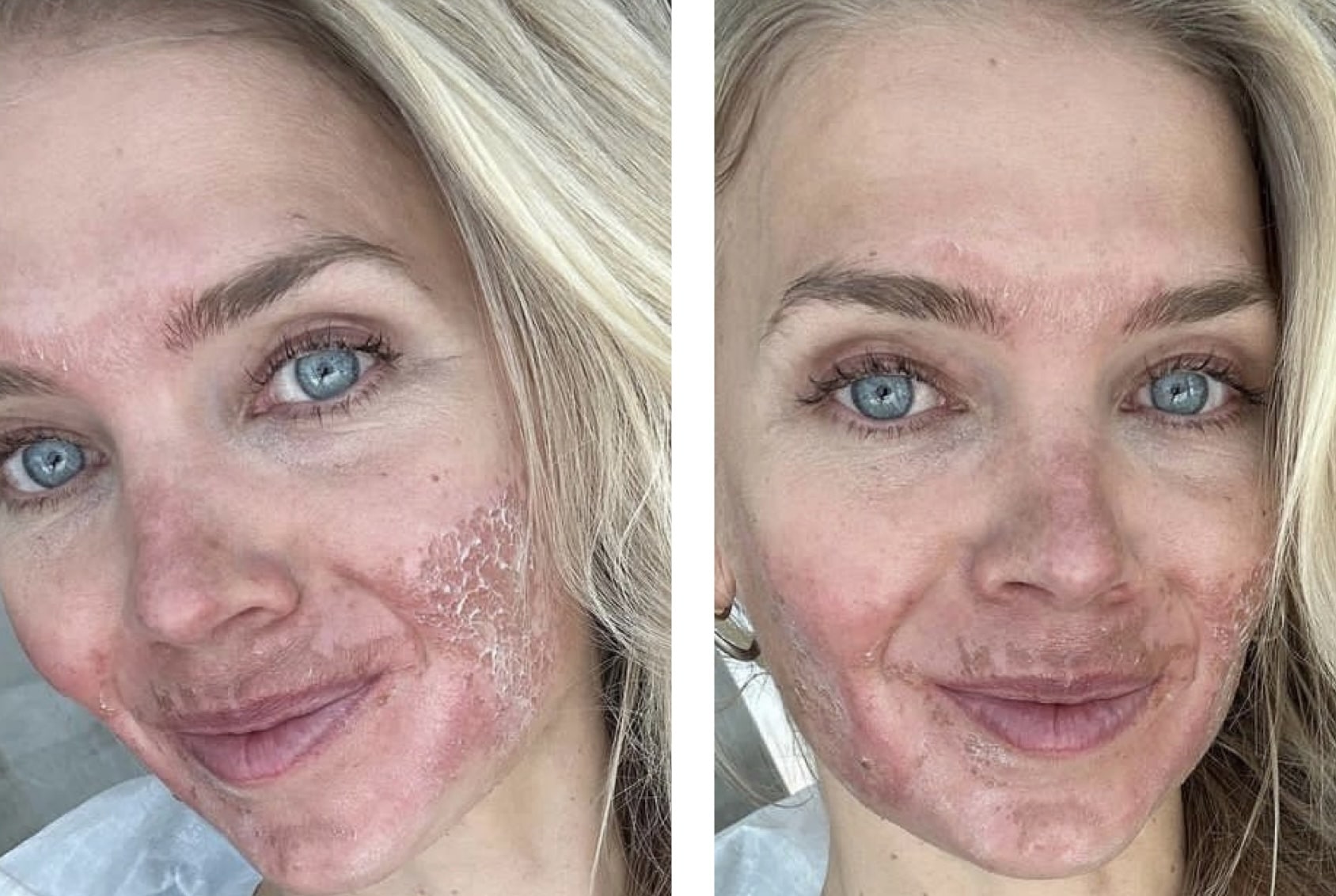
High altitudes in alpine regions are challenging environments for anyone and anything. Not just fauna and flora had to adapt over thousands of years, but humans—whose bodies were not designed for living at altitude—struggle with the specific attributes of alpine environments and have to take special precautions when venturing into alpine regions. High altitudes have lower air pressure, resulting in fewer gas molecules, which means that there is less nitrogen, carbon dioxide, and oxygen at altitude. This results in lower oxygen levels in the air we breathe, low humidity of around 14-20%, and less ozone, which in turn results in UV radiation levels that are three times higher than at sea level. Furthermore, high alpine environments are dominated by cold climates and high wind gusts. All these factors combined can have detrimental effects on the human body but can especially affect the body’s largest sensory organ: the skin.
The effects of lower oxygen levels can be felt quite quickly at altitude. You will feel short of breath rapidly and will not be able to perform the same aerobic and anaerobic exercises as you could at sea level. Some people even get altitude sickness. What is often less obvious, however, are the effects of high altitude on your skin. These are often slower to manifest but can have long-lasting effects. The skin on your body has a surface area of 1.7 square meters and is the most exposed organ to environmental conditions.
In addition, in winter the reflection from snow increases harmful UV rays by up to 90% compared to a mere 9%–17% from grass-covered grounds. This is referred to as the albedo effect. The reflection from the snow also poses another problem as the reflected UV rays can lead to severe sunburn in areas not usually exposed to the sun, such as the inside of the ear or the nose. Although both UV-A and UV-B can damage your skin, the latter causes more serious skin damage. The largest cause of skin cancer is sun exposure and at altitude, the UV radiation exposure is increased significantly.
The overall effects of high altitude on the skin are manifold and I discussed these effects with dermatologist and skin cancer specialist Dr. Elizabeth Dawes-Higgs. Dr. Dawes-Higgs holds a degree in Medicine and in Engineering as well as a PhD from The University of Sydney. As a medical professional, she has volunteered in The Cook Islands and Nepal. In her spare time, she is also a keen skier.
Dehydrated or dry Skin:
“Dehydrated skin will be the first thing you notice, as your skin will be visibly dry and usually has rough scaly spots,” Dr. Elizabeth Dawes-Higgs explained. Dry skin, or in medical terms Xerosis, is one of the most common effects of exposure to low humidity and low temperatures. High winds add to this problem by reducing the water content of the skin, which requires 10-15% of water content to be supple and intact.
While you might think dry skin is more of an inconvenience than a problem, it can actually lead to significant problems as dry skin is prone to cracking, exacerbated by the fact that dry skin is often accompanied by itching, which leads to a tendency to scratch and can lead to more breaks in the skin surface. Open wounds on the skin are liable to infections and the cold environment makes covering up necessary, thus increasing the likelihood of introducing contaminants into wounds.
Skin dryness can also extend to the scalp and lead to flaking of the skin which may appear like dandruff but is not the same. Skin from the scalp may come away in large, thick chunks.
Thickening and furrowing of the skin:
Prolonged sun exposure at high altitudes leads to increased pigmentation as well as thickening and furrowing of the skin. This is more pronounced the longer the exposure is. People who reside at high altitudes, like farmers in the European Alps or Sherpas in the Himalayas, will display significant skin thickening and furrowing. This can lead to chronic dermatitis, which is itchy and at times painful.
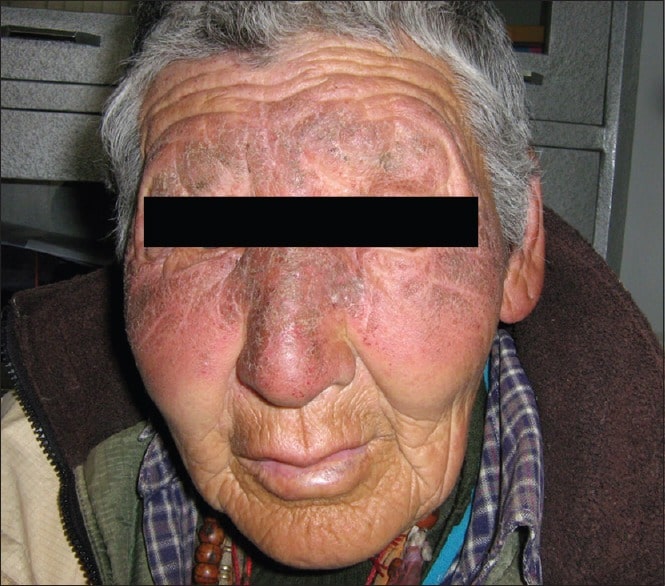
Increased risk of skin cancer:
The outer layer of the skin, the epidermis, contains melanin. Melanin is the body’s natural filter of UV-B rays and absorbs radiation. High levels of sun exposure however lead to DNA damage and it is the mutation of the skin’s DNA that leads to uncontrolled cell growth and formation of a tumor.
The state of Colorado has the highest per capita rate of skin cancer in the US. This is not a coincidence nor does it correlate to a generally increased cancer risk—in fact, Colorado has a below-average overall cancer risk. The reason for the increased skin cancer rate in Colorado stems mainly from having the highest mean elevation of any state, combined with a fair-skinned population. Because of this, skin cancer rates in Colorado have been climbing steadily despite sufficient awareness among the public. Data from the Colorado Department of Public Health & Environment shows a 57% increase in melanoma in the state from 2000 to 2019.
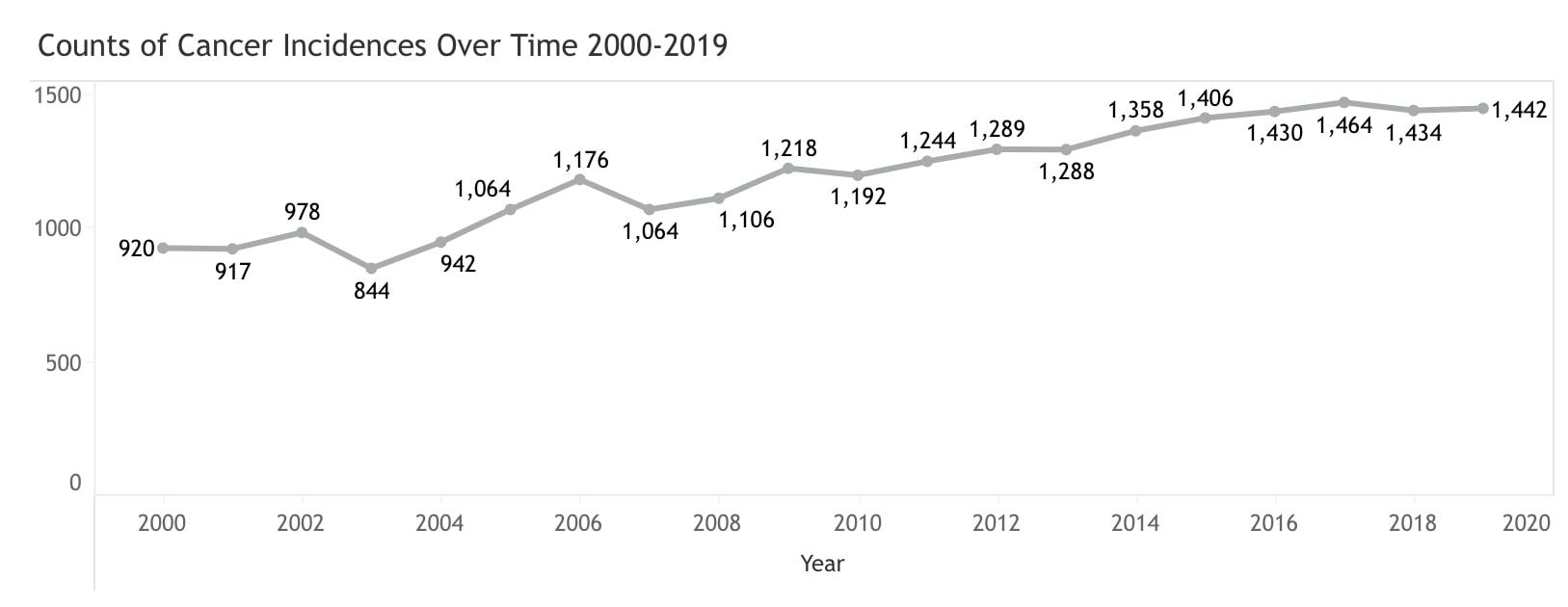
“We have a similar problem in Australia,” Dr. Dawes-Higgs says. “Having higher rates of UV radiation directly correlates with skin cancer rates and Australia has high UV radiation due to its proximity to the equator. Combined with culturally high sun exposure—Australians love the outdoors—in a population that is very fair skinned, Australia has the highest skin cancer rate in the world.”
What you can do to help your skin:
Cover Up!
The easiest way to help your skin is to cover up as much as possible. Clothing can provide an easy barrier to UV rays. While it may be tempting to expose your skin on a nice sunny ski day, you should try to cover up, especially between the hours of 10 a.m. and 3 p.m. when the intensity of UV rays is at its highest.
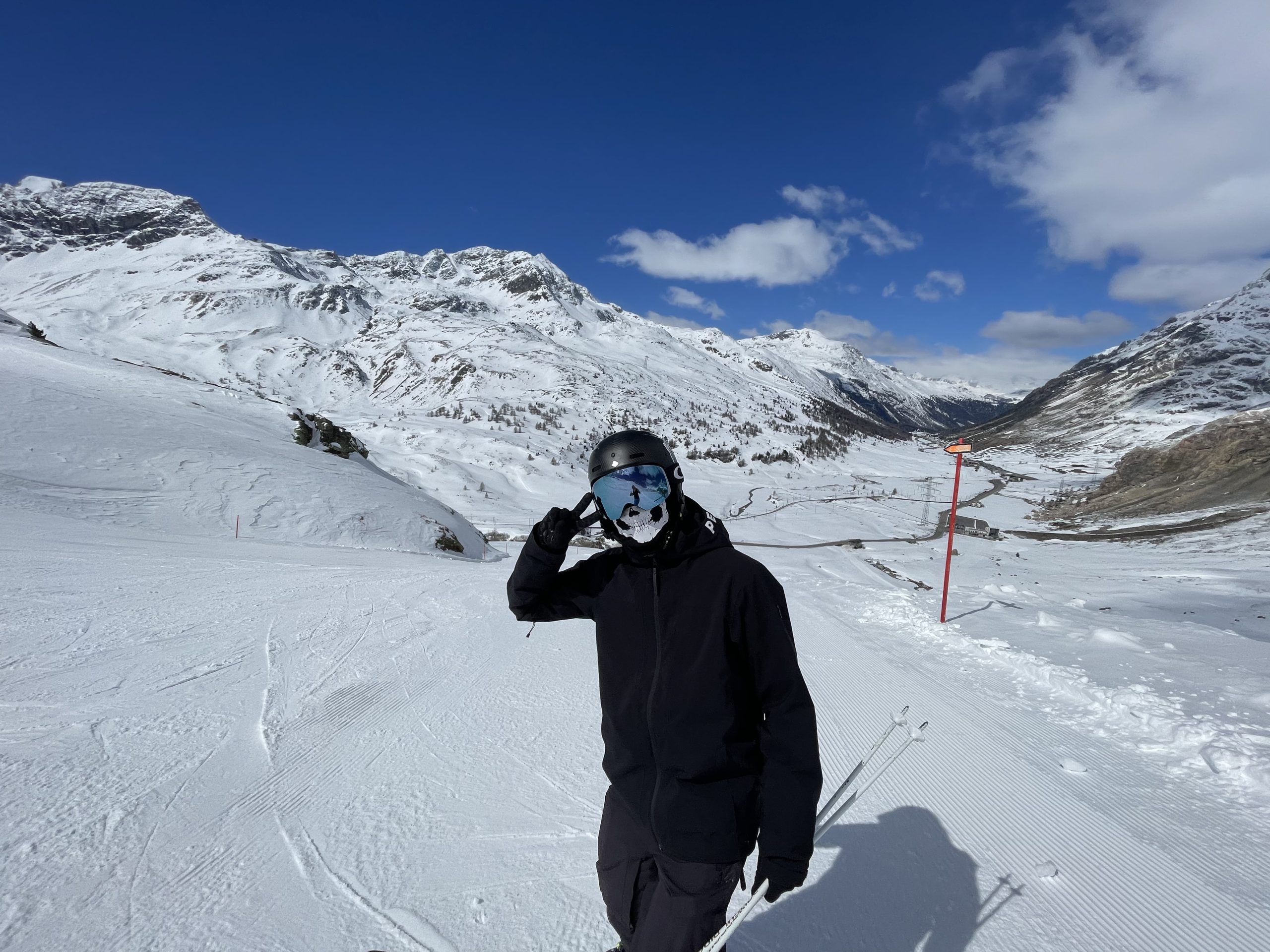
Use sunscreen!
As predictable as this one may be, a good sunscreen is your first go-to. Use it every day, even if it is overcast. Sunscreens contain ingredients that absorb and scatter UV rays and help protect your skin. Sunscreens have been around since the Ancient Egyptians, who used a mixture of rice bran, jasmine, and lupin to protect their skin from the sun. Sunscreen as we know it today was invented by Franz Greitner of Switzerland, following his ascent of Piz Buin in the Swiss Alps. Fittingly, he named his company Piz Buin. The Swiss chemist is also credited with inventing the Sun Protection Factor (short ‘SPF’) system that is still used today. Use sunscreen with an SPF of at least 15. Daily use of sunscreen reduces the risk of developing skin cancer by 40%. For active days, the US Skin Cancer Foundation recommends using an SPF of 30. The foundation has issued a list of recommended products.
Do not use harsh cleansers!
Often the problems of dry skin, itchiness, and potential oozing are attributed to a lack of hygiene, leading people to double down on the use of soaps and antiseptic agents, which dries out your skin even more, aggregating the problem instead of aiding it. However, the use of soap should be minimized and reserved for areas with a lot of sweat glands, like armpits and groin. Where possible, use a soap with a high fatty acid content and doesn’t contain fragrances, colors, or large amounts of preservatives. Find a cleanser with oils, especially natural oils like jojoba, and avoid hot water as it strips more moisture from your skin than cold water.
Do not exfoliate at altitude and limit pool time!
If you are prone to dry skin, avoid exfoliating your skin. Be it an exfoliating face wash or a full-on facial, save that for when you are back at home and don’t unnecessarily aggravate your skin while it is already under stress. This includes limiting time in chlorinated pools and hot tubs as chlorinated water is an irritant to the skin and will make any skin condition worse. Focus instead on hydrating treatments, such as an overnight hydrating mask, or if you are staying at a hotel that offers hydra-facials, splurge on that to keep your skin hydrated.
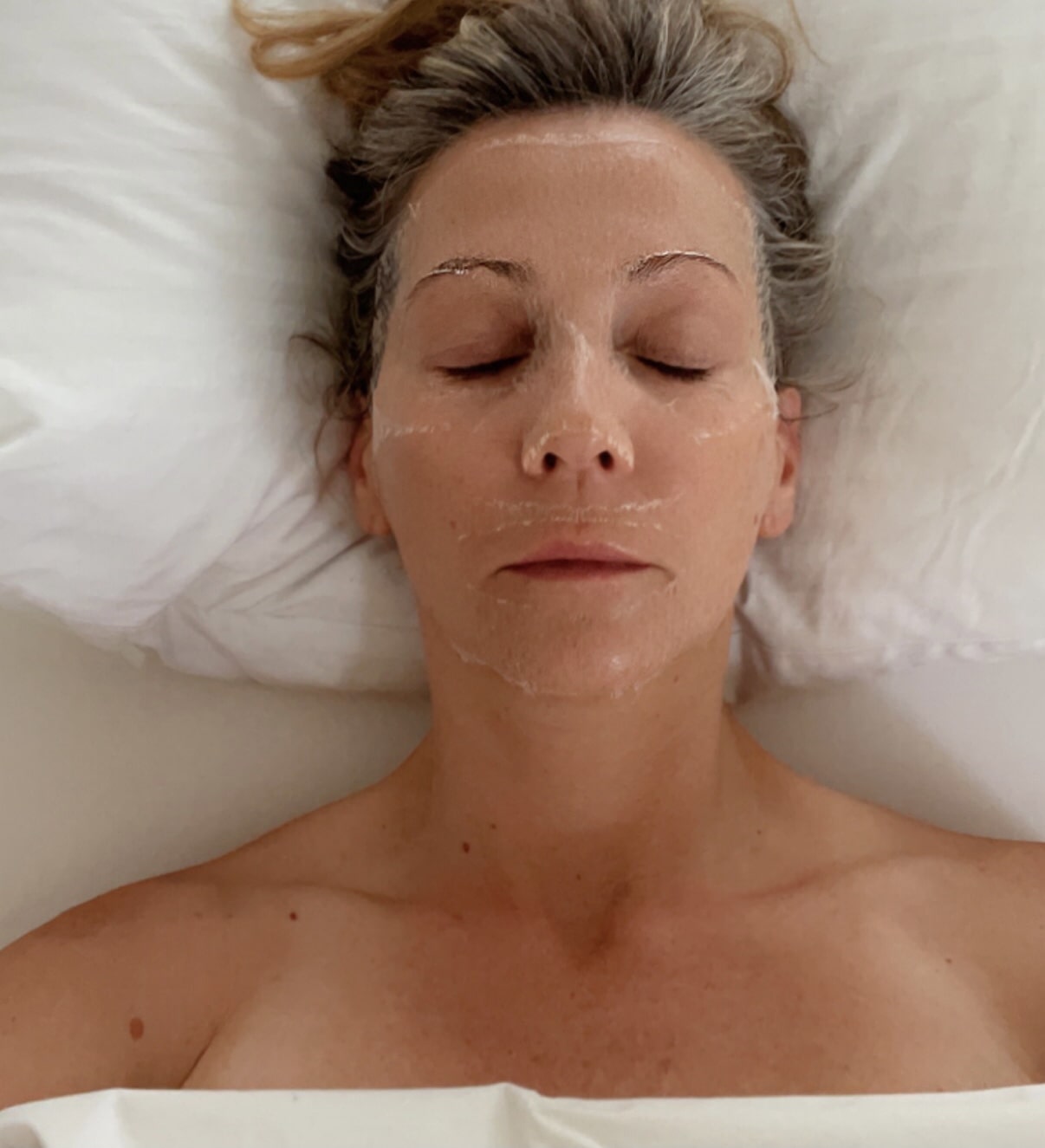
Moisturize!
Moisturize with products high in natural ingredients and low in fragrances, colors, and preservatives. Coconut, jojoba, or olive oil are all-natural oils that are more easily absorbed by the skin. “My favorite ingredient is hyaluronic acid. It is a super moisturizing ingredient found in many new products,” Dr. Dawes-Higgs says. “Hyaluronic acid is great for dry skin because it has the ability to absorb 1,000 times its weight in water and no other ingredient can do that.” The Australian dermatologist suggests a simple rule, “In a nutshell: avoid brightly colored and strongly scented soaps!”
Humidify!
Use a room humidifier if you are struggling with dry skin, especially while you are sleeping. Skin rejuvenates in your sleep. When you sleep, your body goes into repair mode, fixing damage and producing new collagen. “Moisture helps restore your skin in your sleep. It also helps with nosebleeds, sore throats, and congestions, which are also common at altitude,” Dr. Dawes-Higgs explains.
Skin cancer is the most common cancer in the United States. It is estimated that one in five Americans will develop skin cancer in their lifetime and more than 3 million Americans are diagnosed with a form of skin cancer every year. It is important to remember that there are several types of skin cancer. Skin cancer is commonly divided into four sub-forms: squamous cell carcinoma, basal cell carcinoma, Merkel cell cancer, and melanoma. The latter two are the more aggressive types and spread the fastest, so early detection is key. When detected early, melanoma has a 99% survival rate.
Prevention of sun damage is the safest bet if you spend a lot of time outdoors and especially in the mountains, where the UV rays and thus resulting damage are significantly higher than at sea level. So be safe and be skin aware on the snow and use our tips: cover-up, use sunscreen!
If you are prone to dry skin or have suffered from dehydration on past ski trips, we hope our guidelines help keep your skin hydrated at altitude and prevent any discomfort or skin problems. Many hotels these days offer humidifiers in the rooms, so make use of them. For product tips best suited for your skin, consult with your dermatologist or local pharmacist.